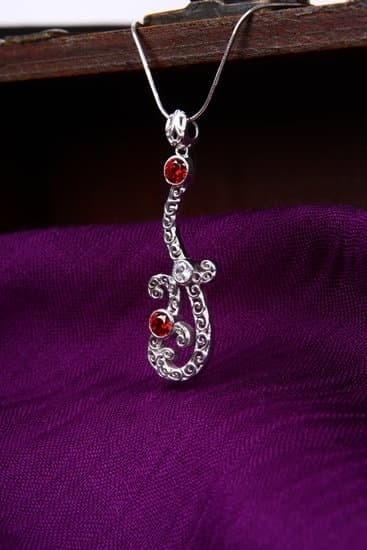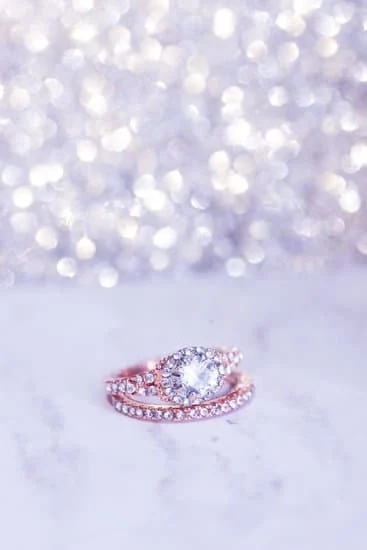Lab grown diamonds have become increasingly popular in the jewelry industry, offering consumers a sustainable and ethically conscious alternative to natural diamonds. In this article, we will delve into the world of lab grown diamonds and explore their rise in popularity. We will examine what lab grown diamonds are, why they are capturing the attention of consumers, and how jewelers are incorporating them into their designs.
Lab grown diamonds, as the name suggests, are created in a laboratory using advanced technology and scientific processes. These diamonds have the same physical properties and chemical composition as natural diamonds but are produced under controlled conditions. As concerns about the environmental impact and ethical implications of mining natural diamonds grow, many consumers are turning to lab grown diamonds as a more responsible option.
The growing popularity of lab grown diamonds can be attributed to several factors. First and foremost is their positive environmental impact. By opting for lab grown diamonds, consumers can play a part in reducing the harmful effects associated with diamond mining. Additionally, lab grown diamonds often come with a lower price tag than their natural counterparts due to advancements in technology that have made their production more accessible and affordable.
The Process of Creating Lab Grown Diamonds
Lab grown diamonds, also known as synthetic or cultured diamonds, are created through a scientific process that replicates the natural formation of diamonds in the earth’s crust. This section will provide a detailed explanation of how lab grown diamonds are created, highlighting the key differences between natural and lab grown diamonds.
The process of creating lab grown diamonds begins with a small diamond seed, either natural or synthetic, which is placed in a growth chamber. The chamber is then filled with a carbon-rich gas and subjected to high temperature and pressure conditions that mimic the natural environment where diamonds are formed. As the carbon atoms attach to the existing diamond seed, layer by layer, over a period of several weeks to months, a rough diamond crystal is formed.
One notable difference between natural and lab grown diamonds is the timeframe in which they are created. Natural diamonds can take billions of years to form under extreme heat and pressure deep within the Earth’s mantle, while lab grown diamonds can be produced in a matter of weeks or months. This accelerated growth process is made possible by advancements in technology and scientific understanding.
Advancements in technology have not only made it possible to create lab grown diamonds more quickly, but they have also made them more accessible to consumers. In the past, lab grown diamonds were primarily used for industrial purposes due to their lower quality compared to natural diamonds.
However, with improvements in production techniques and quality control measures, lab grown diamonds now possess similar physical and chemical properties as their natural counterparts. This has led to an increased acceptance and demand for lab grown diamonds in jewelry.
| Aspect | Natural Diamonds | Lab Grown Diamonds |
|---|---|---|
| Formation Time | Billions of years | Weeks to months |
| Origin | Naturally occurring in the Earth’s crust | Man-made in a laboratory setting |
| Quality Control | Variability in clarity, color, and size | Consistency in clarity, color, and size due to controlled environment |
By understanding the process behind lab grown diamonds, consumers can make informed decisions when purchasing diamond jewelry and appreciate the technological advancements that have made these stones more accessible. Lab grown diamonds offer an ethical alternative to mined diamonds while still possessing the beauty and durability that make diamonds so highly coveted in the jewelry industry.
Breaking Down Diamond Content in Jewelry
Lab grown diamonds have gained significant traction in the jewelry industry, challenging the dominance of natural diamonds. This section aims to dissect the diamond content in jewelry by comparing natural diamonds with lab grown diamonds. By understanding the differences and similarities between them, consumers can make informed decisions about their jewelry purchases.
The Percentage of Lab Grown Diamonds Used in Jewelry Production
One important aspect to consider when evaluating diamond content is the prevalence of lab grown diamonds in jewelry production. Currently, lab grown diamonds represent a small but rapidly increasing percentage of the diamond market. According to a report by Bain & Company, lab grown diamonds accounted for approximately 2-3% of the global diamond supply in 2020, while natural diamonds still make up the majority.
However, industry experts predict that lab grown diamonds will continue to gain momentum. As technology improves and consumer demand for sustainable options rises, it is expected that the market share of lab grown diamonds will increase substantially over time.
How Jewelers Incorporate Lab Grown Diamonds into Their Designs
Jewelers have embraced the use of lab grown diamonds and are finding creative ways to incorporate them into their designs. One common practice is combining both natural and lab grown diamonds within a single piece of jewelry. This allows jewelers to cater to customers with different preferences and budgets.
Another design approach involves using lab grown diamonds as accent stones or side stones, while utilizing larger natural diamonds as centerpieces or focal points. By doing so, jewelers can strike a balance between affordability and rarity, creating pieces that appeal to both cost-conscious consumers and those seeking tradition or exclusivity.
The Impact of Lab Grown Diamonds on the Overall Cost of Jewelry
As compared to natural diamonds, lab grown diamonds typically offer a more affordable option for consumers. The cost of manufacturing these diamonds in a controlled environment often results in a lower price point. This accessibility has enabled consumers to own diamond jewelry at a fraction of the cost traditionally associated with natural diamonds.
Furthermore, the value proposition of lab grown diamonds extends beyond affordability. Some jewelers argue that lab grown diamonds offer greater value for money due to their ability to achieve higher clarity and color grades compared to many natural diamonds. By eliminating the flaws and inclusions found in natural diamonds, lab grown diamonds can offer a more visually appealing option at a lower price.
Factors Influencing the Prevalence of Lab Grown Diamonds in Jewelry
The increasing prevalence of lab grown diamonds in the jewelry industry can be attributed to a variety of factors that have driven their popularity among consumers.
First and foremost, market demand and changing consumer preferences have played a significant role in the rise of lab grown diamonds. As consumers become more conscious about ethical and sustainable practices, there has been a shift towards lab grown diamonds as a more environmentally friendly alternative to traditional mined diamonds. The ability to produce diamonds in a laboratory setting allows for minimizing environmental impact by reducing the need for mining activities.
Sustainability and ethical considerations are also driving forces behind the growing preference for lab grown diamonds. Mined diamond extraction is often associated with social issues, such as unsafe working conditions and exploitation. On the other hand, lab grown diamonds are created through controlled processes, ensuring that no harm is caused to local communities or ecosystems. This aligns with the values of many consumers who are seeking jewelry options that are both beautiful and responsible.
Additionally, celebrities and influencers have played an important role in promoting lab grown diamonds in jewelry. Many high-profile individuals have publicly expressed their support for sustainably sourced and ethically produced diamonds. By wearing lab grown diamond jewelry themselves or openly endorsing these alternatives, they inspire their followers to consider lab grown diamonds as a desirable choice.
These factors have combined to create a growing market for lab grown diamond jewelry. As consumers continue to prioritize sustainability, ethics, and socially responsible practices, this trend is expected to continue its upward trajectory.
| Factor | Influence on Prevalence |
|---|---|
| Market Demand | Driving force behind the rise of lab grown diamonds |
| Sustainability & Ethics | Increasing preference for environmentally friendly and socially responsible jewelry options |
| Celebrities & Influencers | Promotion of lab grown diamonds as a desirable choice through endorsement and visibility |
Pros and Cons of Lab Grown Diamonds in Jewelry
Lab grown diamonds have gained popularity in the jewelry industry due to their unique advantages and disadvantages. This section will explore the pros and cons of lab grown diamonds in terms of price, ethics, sustainability, and perceived value.
Advantages of Lab Grown Diamonds
- Price: One major advantage of lab grown diamonds is their affordability compared to natural diamonds. Lab grown diamonds can be up to 30% cheaper than natural ones, making them a more budget-friendly option for consumers.
- Ethics: Lab grown diamonds are considered ethically sourced since they are not associated with the negative impacts often associated with the diamond mining industry, such as environmental damage and human rights violations.
- Sustainability: The production of lab grown diamonds requires significantly less energy and water compared to mining natural diamonds. Additionally, lab grown diamonds do not contribute to deforestation or habitat destruction.
Disadvantages of Lab Grown Diamonds
- Limited Color Range: Currently, lab grown diamonds are predominantly available in colorless or near-colorless varieties. The technology to produce fancy colored lab grown diamonds is still developing.
- Perceived Value: Some consumers may still perceive natural diamonds as having a higher value compared to lab grown diamonds due to their rarity and long-standing cultural associations. However, this perception is gradually changing as awareness about lab grown diamonds grows.
It is important for consumers to weigh these pros and cons when considering purchasing jewelry with lab grown diamonds. Ultimately, the decision should align with personal values and preferences regarding price, ethics, sustainability, and desired aesthetic options.
How to Identify Lab Grown Diamonds in Jewelry
Lab grown diamonds have gained significant popularity in the jewelry industry, offering consumers an ethical and sustainable alternative to natural diamonds. However, it is important for buyers to be able to distinguish between lab grown and natural diamonds when making a purchase. This section will provide guidance on how to identify lab grown diamonds in jewelry.
One key characteristic to look for when distinguishing lab grown diamonds from natural diamonds is their color. Natural diamonds come in a wide range of colors, while lab grown diamonds are typically colorless or have a slight hint of yellow or blue. This is because the creation process of lab grown diamonds often results in fewer impurities, leading to a higher degree of clarity and colorlessness.
Certifications and grading reports can also play a crucial role in identifying lab grown diamonds. The Gemological Institute of America (GIA), for example, offers a specific grading report for laboratory-grown diamonds that provides information about the origin of the diamond. These reports include details about the growth method used and any treatments applied to the diamond.
Experts also use specialized tools and techniques to detect lab grown diamonds. One commonly used tool is a spectroscopy machine, which analyzes the light absorption properties of gemstones. Lab grown diamonds have distinct patterns in their light absorption that differ from those of natural diamonds.
By paying attention to these key characteristics, utilizing certifications and grading reports, and consulting with experts if needed, buyers can confidently identify lab grown diamonds in jewelry. This knowledge empowers consumers to make informed purchasing decisions based on their personal preferences and values.
Lab Grown Diamonds as a Valuable Investment in Jewelry
Lab grown diamonds are not only gaining popularity in the jewelry industry for their ethical and sustainable attributes, but they are also proving to be a valuable investment. As more consumers become aware of the advantages of lab grown diamonds, they are recognizing the potential for these diamonds to appreciate in value over time.
One of the key factors that contribute to the investment value of lab grown diamond jewelry is their competitive pricing compared to natural diamonds. Lab grown diamonds typically cost significantly less than their natural counterparts, making them an enticing option for investors who want to maximize their return on investment.
Additionally, with advancements in technology and production techniques, the price gap between lab grown and natural diamonds is expected to further narrow, increasing the attractiveness of lab grown diamonds as an investment option.
Another aspect that adds value to lab grown diamond jewelry is its sustainability and ethical appeal. Consumers are increasingly conscious about ensuring their purchases align with their values, and opting for lab grown diamonds allows them to do just that.
Lab grown diamonds are created through a controlled process that minimizes environmental impact and avoids the socio-economic issues associated with mining natural diamonds. As sustainability becomes a more important consideration for consumers, the demand for lab grown diamond jewelry is likely to increase, contributing to its potential as an investment.
Market insights and trends also indicate that lab grown diamond jewelry holds investment potential. While it’s important to note that investing in any form of jewelry carries risks, experts suggest that certain types of lab grown diamond jewelry may have greater resale value due to their design aesthetics or rarity.
Additionally, as more reputable jewelers start incorporating lab grown diamonds into their collections and the mainstream acceptance of these gems grows, there may be increased demand from collectors or enthusiasts who seek unique pieces or limited edition designs.
As consumers continue to embrace sustainable practices and seek alternative options within the luxury goods market, it’s clear that lab grown diamond jewelry has significant potential as an investment choice. With its competitive pricing, ethical appeal, and potential for appreciation in value, lab grown diamonds are poised to make a lasting impact on the jewelry industry and the investment landscape overall.
The Future of Lab Grown Diamonds in Jewelry
Predictions for the growth and market share of lab grown diamonds in the jewelry industry
The future of lab grown diamonds in the jewelry industry looks promising, as these man-made gems continue to gain popularity among consumers. According to industry experts, the market share of lab grown diamonds is expected to increase significantly in the coming years. One report predicts that by 2030, lab grown diamonds will account for around 10% of the total global diamond market.
One driving factor behind this projected growth is the increasing demand for sustainable and ethically-sourced products. Lab grown diamonds offer a more environmentally friendly and socially responsible alternative to natural diamonds, which are often associated with environmental concerns and ethical controversies surrounding labor practices in diamond mines. As consumers become more conscious of their purchasing decisions, lab grown diamonds are positioned to capture a larger share of the market.
Furthermore, advances in technology and production techniques have made it easier and more cost-effective to create lab grown diamonds. This has resulted in a decrease in prices, making them more accessible to a wider range of consumers. With increasing awareness and affordability, it is likely that more people will choose lab grown diamonds for their jewelry needs in the future.
Continued advancements in technology and diamond production techniques
The future of lab grown diamonds also holds tremendous potential for further technological advancements and innovation. Scientists are continually striving to improve upon existing processes, leading to better quality gemstones with enhanced color, clarity, and size options. Advances in cutting-edge technologies such as chemical vapor deposition (CVD) and high-pressure high-temperature (HPHT) methods are driving these improvements.
Researchers are also exploring ways to develop new types of synthetic gems using different materials besides carbon. This opens up doors for unique colors and varieties of lab grown diamonds that may not be found naturally. The ongoing research efforts indicate that there is much room for growth and exploration within the field of lab grown diamonds, suggesting an exciting future for the industry.
The potential impact on the natural diamond industry and market dynamics
As lab grown diamonds continue to gain traction in the jewelry industry, it is inevitable that their rise will have implications on the natural diamond market. The increasing popularity of lab grown diamonds has already prompted some traditional diamond companies to venture into the synthetic diamond business. This diversification allows them to tap into a growing consumer segment and cater to changing preferences.
The introduction of lab grown diamonds has also prompted a shift in market dynamics. Historically, natural diamonds held a monopoly on the diamond industry and commanded higher prices due to their scarcity. However, with the availability of affordable lab grown options, consumers now have a wider range of choices. This has led to increased price competition and pressure on natural diamond producers to adapt and differentiate themselves.
While it is clear that lab grown diamonds are disrupting the jewelry industry, it is important to note that both natural and lab grown diamonds can coexist in the market. Each offers unique characteristics and appeals to different consumers based on their preferences and values. The future will likely see a balance between natural and lab grown diamonds as consumers continue to demand choices that align with their increasing concerns for sustainability and ethics.
Conclusion
In conclusion, the rise of lab grown diamonds in the jewelry industry has been a significant phenomenon that continues to shape the market. Lab grown diamonds offer consumers a more accessible and affordable option without compromising on quality and beauty. This trend is driven by advancements in technology, which have made the creation of lab grown diamonds more efficient and cost-effective.
Throughout this article, we have explored the process behind creating lab grown diamonds and compared it to natural diamonds. We have also examined how jewelers incorporate lab grown diamonds into their designs and the impact it has on the overall cost of jewelry. It is clear that lab grown diamonds are becoming increasingly prevalent in jewelry production, with a growing percentage being used in various pieces.
Several factors are influencing the prevalence of lab grown diamonds, including changing consumer preferences, sustainability concerns, and endorsements from celebrities and influencers. The advantages of lab grown diamonds, such as their lower price point and ethical sourcing, make them an attractive option for many buyers. However, it is important to consider their limitations as well, such as a more limited color range and potentially lower perceived value compared to natural diamonds.
Looking ahead, the future of lab grown diamonds in the jewelry industry seems promising. Predictions suggest that they will continue to grow in market share due to ongoing advancements in technology. This growth may have implications for the natural diamond industry and market dynamics as a whole. Ultimately, it is up to individual consumers to explore their options and make informed purchasing decisions based on their own preferences and priorities.
Frequently Asked Questions
What percentage of diamonds are lab grown?
The percentage of diamonds that are lab grown varies depending on the market and the specific segment within the diamond industry. However, it is generally accepted that lab-grown diamonds represent a small but growing percentage of the overall diamond market.
While exact figures may vary, estimates suggest that lab-grown diamonds account for around 2-3% of the total diamond supply. This proportion is expected to increase in the future as technology advances and consumer preferences continue to evolve.
Do jewelers use lab created diamonds?
Yes, jewelers do use lab-created diamonds. As consumer demand for sustainable and ethical alternatives to mined diamonds has increased, many jewelers have started offering lab-grown diamonds alongside their natural diamond offerings.
In fact, several renowned jewelry brands have embraced lab-grown stones and incorporated them into their collections. The availability of lab-created diamonds in various shapes, sizes, and qualities allows jewelers to cater to a broader range of customer preferences and budgets.
How much less are lab-grown diamonds?
Lab-grown diamonds typically cost significantly less than their natural counterparts. On average, a lab-created diamond can be anywhere from 20% to 30% less expensive than a similar natural diamond with equivalent specifications (cut, clarity, color). The price difference primarily stems from differences in production methods and supply chains between natural and lab-grown diamonds.
Lab-created diamonds do not require mining operations or face scarcity concerns associated with naturally occurring diamonds; hence they avoid additional costs related to extraction and limited availability. This cost advantage makes lab-grown diamonds an attractive option for consumers seeking more affordable alternatives without compromising on quality or aesthetics.

Welcome to my jewelry blog! My name is Sarah and I am the owner of this blog.
I love making jewelry and sharing my creations with others.
So whether you’re someone who loves wearing jewelry yourself or simply enjoys learning about it, be sure to check out my blog for insightful posts on everything related to this exciting topic!





